Ever looked at your prescription bottle and wondered: Is this medicine still good? Or maybe you picked up a refill, only to be told you can’t get it because the refill-by date passed - even though the bottle still has pills left. You’re not alone. Millions of people mix up these two dates, and the confusion can cost you money, time, or even your health.
What’s the Difference Between Refill-By and Expiration Dates?
These two dates look similar - both are printed on your prescription label - but they do completely different things.
The expiration date tells you when the medicine is no longer safe or effective to take. It’s based on science. The drug manufacturer tests how long the active ingredients stay stable under normal storage conditions. That date is set by the company and approved by the FDA. Once it passes, the medication could break down, lose strength, or even become harmful.
The refill-by date (sometimes called refill-through date) has nothing to do with the medicine’s quality. It’s an administrative rule. It’s the last day your pharmacy can legally give you more of that prescription without a new doctor’s order. Think of it like a gift card with an expiration - you can use it until the date runs out, then you need a new one.
Here’s a real example: You get a 30-day supply of blood pressure medicine with three refills. The label says:
- Expiration Date: 06/2026
- Refill-By Date: 11/19/2025
You take your pills for 30 days. You refill twice. Now it’s December 2025. You still have five pills left. The expiration date says 2026 - so the medicine is still good. But the refill-by date passed in November. You can’t get another refill until your doctor writes a new prescription. The pills aren’t expired. The refill authorization is.
Why Do These Dates Even Exist?
The expiration date exists for your safety. The FDA requires drugmakers to prove their products remain potent and safe until that date. Even if a pill looks fine, its chemical structure can change over time - especially if it’s been exposed to heat, light, or moisture. Some medications, like insulin or liquid antibiotics, are especially sensitive. Taking them past their expiration date could mean they don’t work - and that’s dangerous if you’re managing a chronic condition.
The refill-by date comes from federal and state pharmacy laws. It’s part of the system that controls how doctors prescribe certain drugs, especially controlled substances like painkillers or ADHD meds. The goal? Prevent misuse and make sure your doctor checks in regularly to see if the medication is still right for you. For example, Schedule II drugs (like oxycodone) can’t be refilled at all - you need a new script every time. Other drugs, like statins or antidepressants, can have up to 12 refills, but only within a set time window - usually one year from the original fill date.
These rules started with the Omnibus Budget Reconciliation Act of 1990 and got tighter after the Medicare Modernization Act in 2003. Today, every licensed pharmacy in the U.S. must follow them.
What Happens When You Ignore These Dates?
Ignoring the expiration date can be risky. The FDA says you shouldn’t use medication after it expires. While some studies show certain pills may still work months or even years past their date, that’s not guaranteed. And for life-saving drugs - like epinephrine for allergies, nitroglycerin for heart attacks, or insulin - you can’t afford to take a chance. A 2021 FDA report found that using expired medications contributed to 37.2% of medication errors in community pharmacies.
Ignoring the refill-by date is more about access than safety. If you wait too long to refill, you might run out. That’s a problem if you’re on daily meds for diabetes, high blood pressure, or thyroid disease. A 2022 CMS report showed that 23.7% of Medicare patients had treatment interruptions because they missed their refill-by date. That’s not because the medicine was bad - it’s because they didn’t know the refill window had closed.
Worse, some people make the opposite mistake. They see a refill-by date and think, “Oh, this medicine expires then,” so they throw away pills they still need. One Reddit user reported tossing $300 worth of unexpired insulin because they confused the refill date with the expiration date. That’s not just wasteful - it’s dangerous.
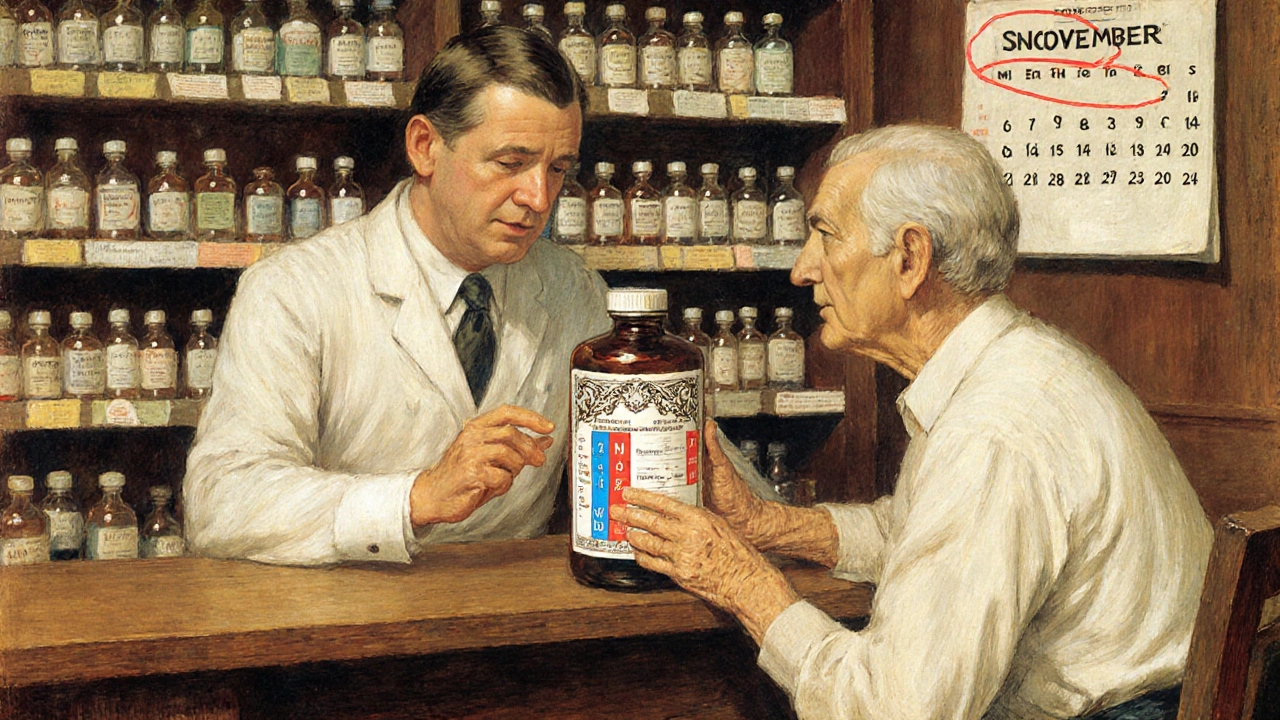
How to Read Your Prescription Label Like a Pro
Here’s how to quickly spot the difference on your label:
- Expiration Date: Usually labeled “EXP,” “Use By,” or “Expires.” It’s often in MM/YYYY format. This is the safety date.
- Refill-By Date: Look for “Refill Until,” “Refill Expiration,” or “No Refills After.” It’s usually a full date (MM/DD/YYYY). This is the administrative date.
- Number of Refills Left: This is separate. It might say “3 Refills Remaining.” That number only matters until the refill-by date. After that, even if you have refills left, you can’t use them.
Pharmacies are required to print both dates clearly. If they’re hard to read, ask for a new label. You have the right to a legible prescription.
What to Do When You’re Confused
Don’t guess. Don’t assume. Always check.
If you’re not sure whether you can refill, call your pharmacy. They’ll check your record and tell you if you’re eligible. If your refill-by date has passed, call your doctor. Most will renew the prescription over the phone - especially for chronic conditions.
If you find expired medication, don’t flush it or toss it in the trash. Take it to a drug take-back location - many pharmacies offer this for free. The FDA has a list of authorized collection sites online.
For people on multiple prescriptions, keep a simple log: write down each medicine, its expiration date, and its refill-by date. Set phone reminders 7 days before the refill-by date. A 2023 study by the American Pharmacists Association found that patients who did this reduced missed refills by 63.4%.
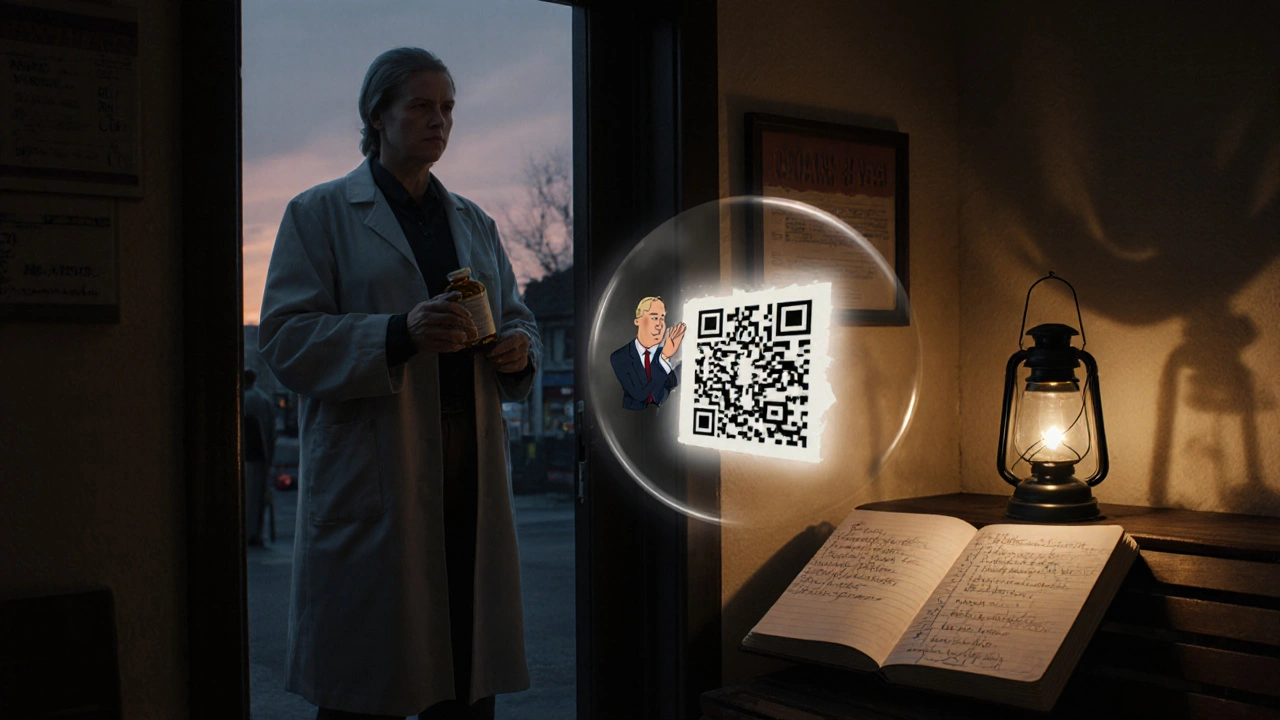
How Pharmacies Are Making This Easier
Pharmacies know this is confusing. That’s why big chains like CVS and Walgreens now use color-coded labels. Red = safety date (expiration). Blue = administrative date (refill-by). That visual cue helps patients spot the difference at a glance.
Some pharmacies have started adding QR codes to labels. Scan it with your phone, and you’ll get a short video explaining what each date means. CVS reported a 47.8% drop in patient questions about dates after rolling this out in 5,000 stores.
By 2025, the FDA expects most digital prescriptions to clearly separate these dates in electronic systems. That means your doctor’s EHR, your pharmacy’s system, and your insurance portal will all show the same clear labels - no more mismatched dates.
What This Means for You
You don’t need to be a pharmacist to understand your prescription label. You just need to know two things:
- Expiration date = Is this medicine still safe to take?
- Refill-by date = Can I still get more of this prescription?
They’re not the same. They’re not interchangeable. And confusing them can lead to skipped doses, unnecessary doctor visits, or even hospitalizations.
Take five minutes the next time you pick up a prescription. Read the label. Write down both dates. Set a reminder. Ask your pharmacist if you’re unsure. That small step could keep you healthy - and save you hundreds of dollars.
Medication isn’t just about the pill. It’s about the label, the timing, and the system behind it. Understanding these dates gives you control over your health - not the other way around.
Can I still take my medicine after the expiration date?
The FDA says no - you shouldn’t use medication after its expiration date. While some pills may still be potent past that date, there’s no guarantee. For critical medications like insulin, epinephrine, or heart drugs, using expired medicine could be life-threatening. Even for common pills like ibuprofen or allergy meds, potency can drop over time, especially if stored in hot or humid places. When in doubt, throw it out or take it to a drug take-back site.
Why can’t I refill my prescription even though I still have pills left?
Because the refill-by date has passed. That date is set by your doctor and pharmacy to make sure you’re still being monitored for that medication. Even if you have 10 pills left, once that date passes, the pharmacy can’t legally give you more without a new prescription. This isn’t about the medicine being expired - it’s about the authorization. Call your doctor to renew it.
Do all prescriptions have a refill-by date?
Most do - but not all. Controlled substances like opioids (Schedule II) can’t be refilled at all, so they don’t have a refill-by date. Other drugs, like antibiotics, are often written as “one-time use” with no refills. For chronic conditions like high blood pressure or diabetes, refill-by dates are standard. Check your label - if it says “No Refills,” then there’s no refill-by date.
Is the refill-by date the same as my insurance’s refill window?
Not always. Your insurance might let you refill a prescription earlier than your pharmacy’s refill-by date - for example, you might be allowed to refill at 75% of the supply instead of waiting until you’re out. But the refill-by date on your label is the legal cutoff. Even if your insurance allows it, the pharmacy can’t give you more after that date without a new script. Always follow the label date, not the insurance rule.
Can I ask my doctor to extend the refill-by date?
Yes - and you should, especially if you’re on long-term medication. Many doctors will extend refill-by dates for chronic conditions, especially if you’re stable and following your treatment plan. Call your doctor’s office and ask if they can extend it to 12 months. Some states, like California, require 12-month refill periods for certain drugs. Others, like New York, limit it to 6 months for specific medications. It’s worth asking.
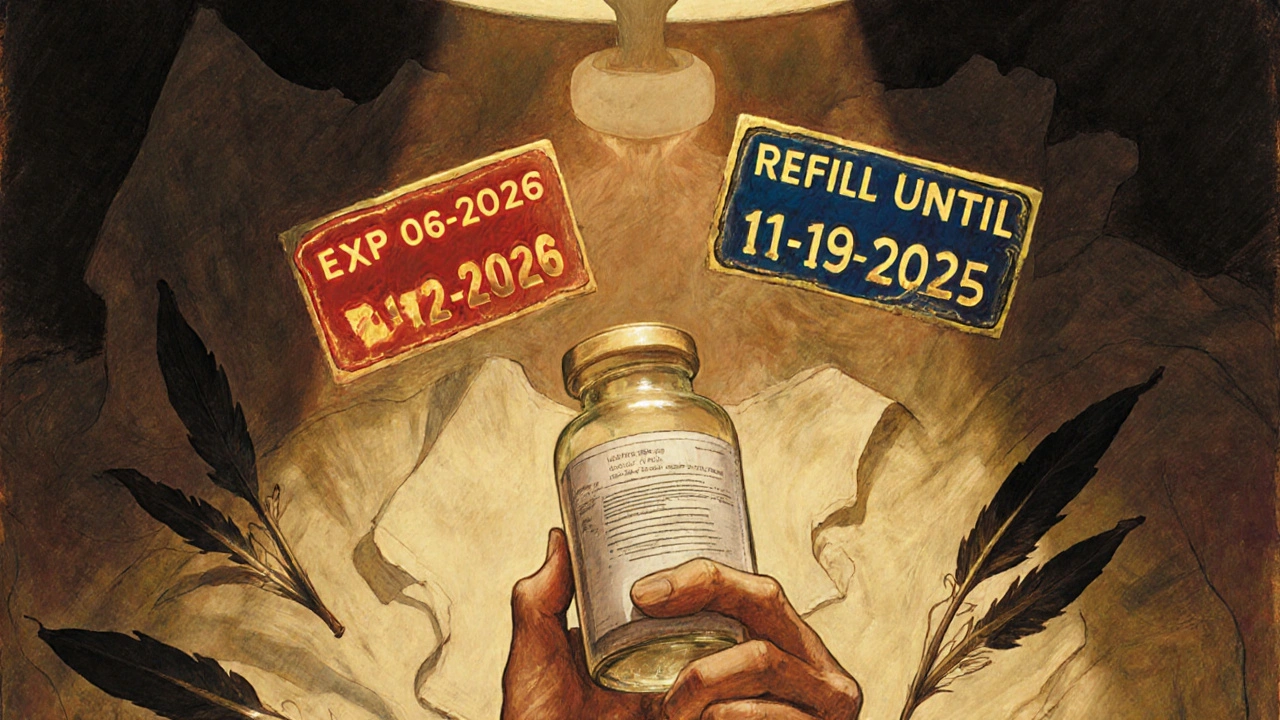

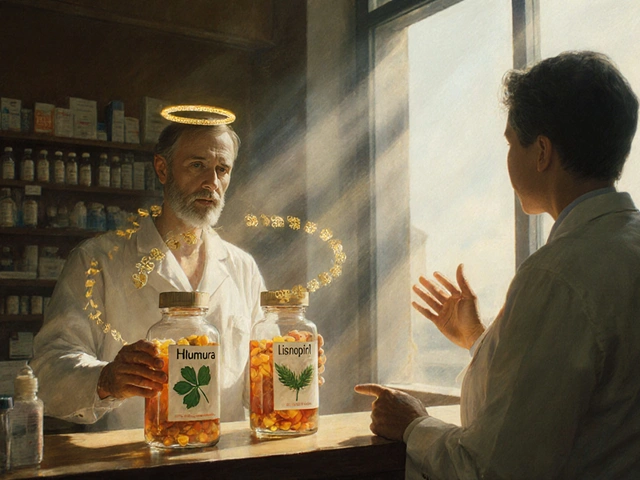
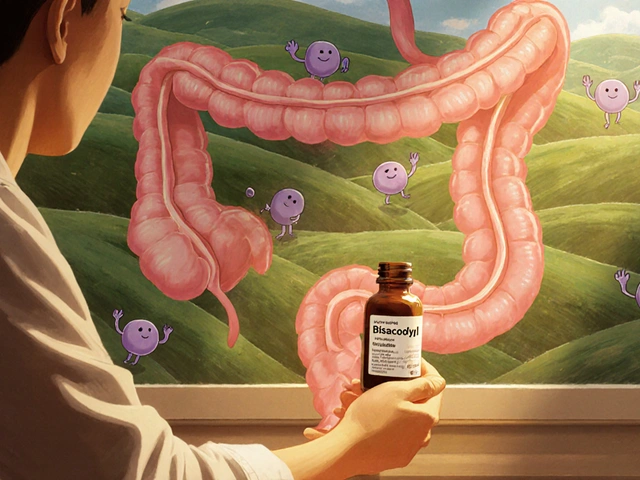


Written by Martha Elena
I'm a pharmaceutical research writer focused on drug safety and pharmacology. I support formulary and pharmacovigilance teams with literature reviews and real‑world evidence analyses. In my off-hours, I write evidence-based articles on medication use, disease management, and dietary supplements. My goal is to turn complex research into clear, practical insights for everyday readers.
All posts: Martha Elena